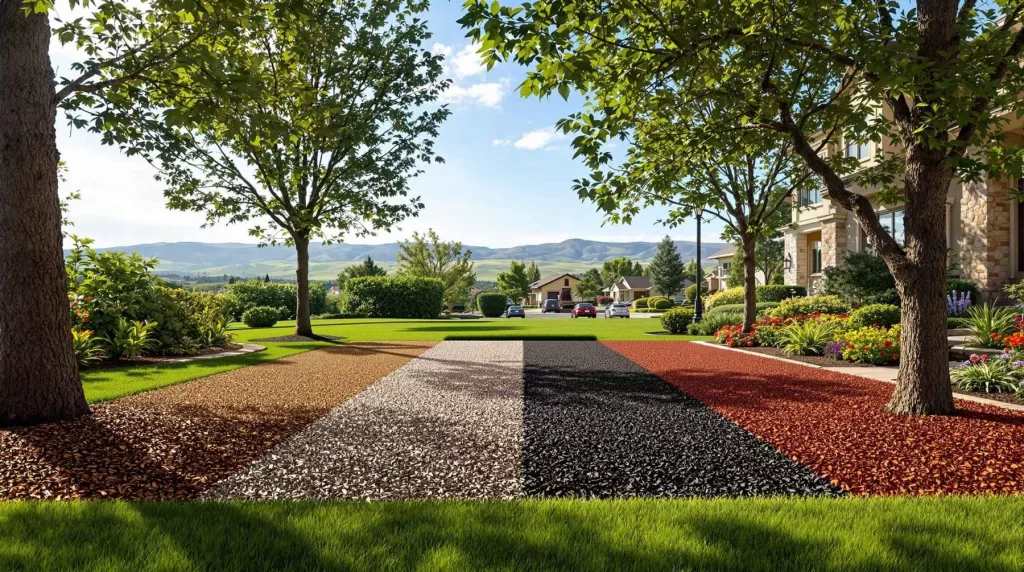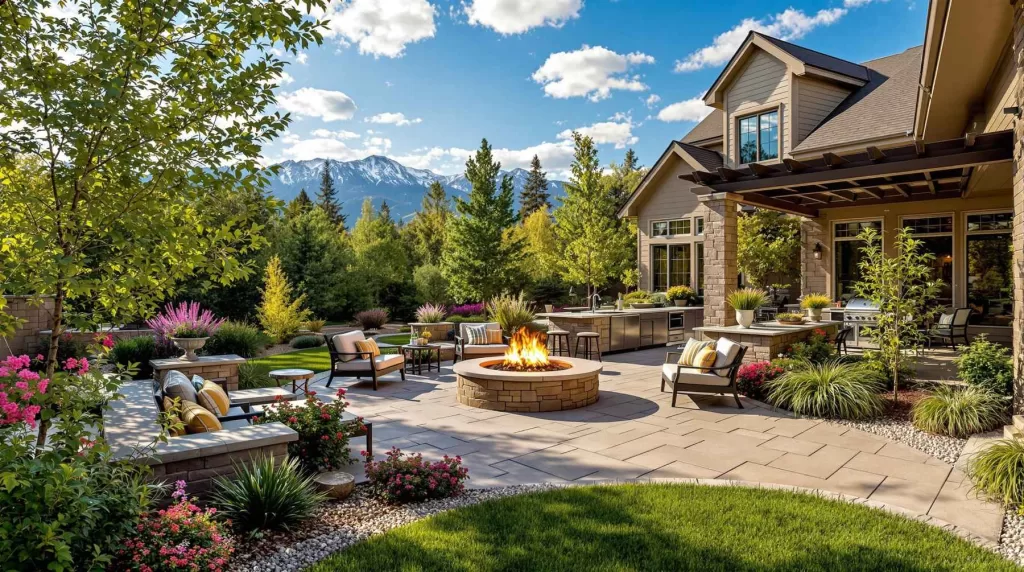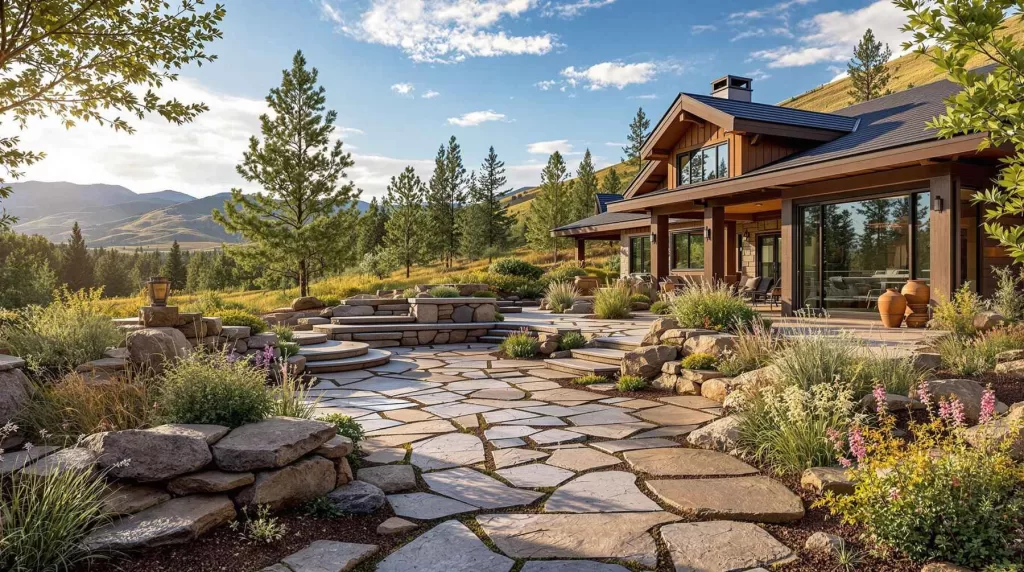Introduction
As the last leaves fall and the temperatures begin to drop in Castle Pines, it’s time to shift focus from summer blooms to winter protection. Preparing your landscape now ensures your lawn, plants, and trees survive the harsh conditions and thrive come spring. In this guide, we’ll walk you through practical, elevation-specific strategies to protect your outdoor investment during the late fall season.
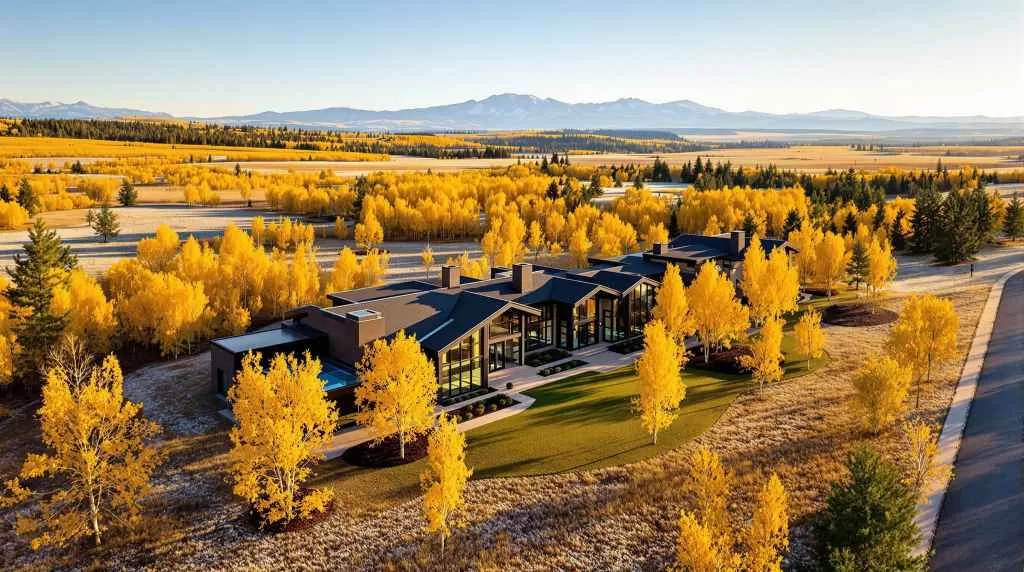
Why Winter Preparation Matters in Castle Pines
Before winter fully sets in, it’s critical to understand why timing and technique matter when preparing your yard. A trusted Castle Pines landscaping company can help you make decisions tailored to your property’s conditions, ensuring your plants and soil are protected from Castle Pines’ unique climate challenges.
Understanding Castle Pines’ Unique Climate
Castle Pines sits at a higher elevation, which means winters are colder, snow lasts longer, and the freeze-thaw cycle is more extreme. This environment places added stress on your landscape—especially if it’s not properly prepared for these swings in temperature.
Elevation and Its Impact on Landscaping
At over 6,000 feet above sea level, Castle Pines landscapes are more exposed to winter desiccation and soil erosion. Plants can lose moisture quickly, and frost can damage roots that aren’t properly insulated, making proactive late fall preparation essential.
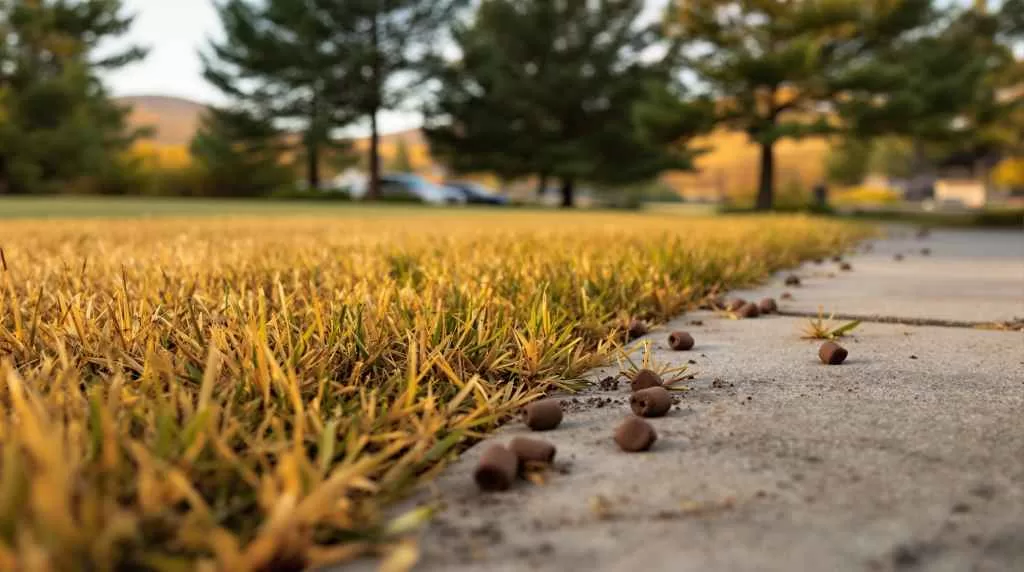
Preparing Your Lawn for Winter
A healthy lawn in spring starts with smart steps in late fall. Local conditions demand specific timing and techniques, which is why many homeowners turn to Castle Pines backyard landscaping experts for help preparing their turf before winter hits. From your final mow to moisture management, every step plays a role in preventing winter damage.
The Importance of the Final Mow
Cutting your grass too short before winter can stress the lawn, while leaving it too long invites snow mold. The ideal mowing height for Castle Pines is about 2.5 to 3 inches. This helps insulate the crown of each blade while reducing the risk of disease as snow accumulates.
Aeration and Overseeding in Late Fall
Late fall is the perfect time to aerate compacted soil, giving grassroots room to breathe and absorb nutrients. Overseeding immediately after aeration helps strengthen weak patches, especially if you use a cool-season grass blend adapted to Colorado’s climate.
Winter Fertilizer Tips for Castle Pines Lawns
Applying a slow-release, nitrogen-rich fertilizer before the first deep freeze gives your lawn the nutrients it needs to survive winter. This process, known as “winterizing” your lawn, encourages deep root growth and helps turf green up faster in spring.
Managing Lawn Weeds Before the Snow
Tackling weeds in the fall keeps them from getting a head start in the spring. Pre-emergent herbicides are effective against common Castle Pines weeds, while hand-pulling persistent invaders is a safe option for sensitive areas of your yard.
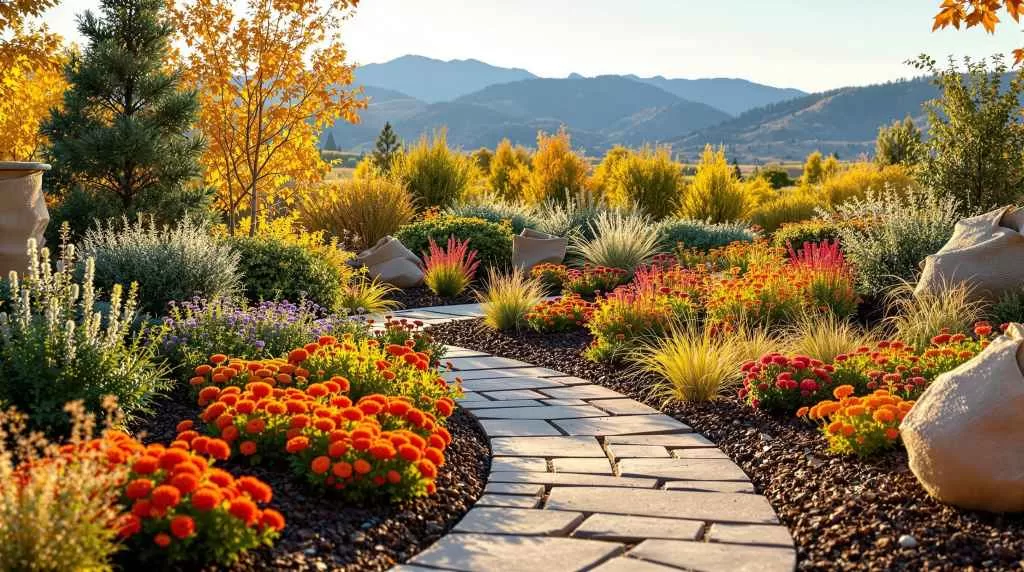
Protecting Perennials and Shrubs
Late fall is the ideal time to create a buffer between your delicate plants and the harsh Colorado winter. With guidance from experienced Castle Pines landscaping professionals, you can shield your perennials and shrubs from freezing temperatures, drying winds, and sudden weather swings—all common at higher elevations.
Mulching for Insulation
Applying a 2–3 inch layer of mulch around your plant bases helps regulate soil temperature and retain moisture during the dry winter months. Focus on areas around perennials, shrubs, and young trees, but avoid piling mulch directly against stems or trunks.
Wrapping Sensitive Shrubs
Broadleaf evergreens and other tender shrubs benefit from burlap wraps or breathable plant covers to protect against windburn and moisture loss. These wraps are especially important for south or west-facing exposures, where winter sun can dry out foliage.
Cutting Back Perennials
While some perennials should be left standing for winter interest, others need to be cut back to reduce disease and promote healthy regrowth. Plants like peonies, hostas, and daylilies are good candidates for trimming once their foliage dies back completely.
Hydration Before the Freeze
Giving your plants a deep watering in late fall—just before the ground freezes—helps them survive through the dry months ahead. This is especially critical in Castle Pines, where winter drought conditions can quietly damage root systems without visible symptoms.
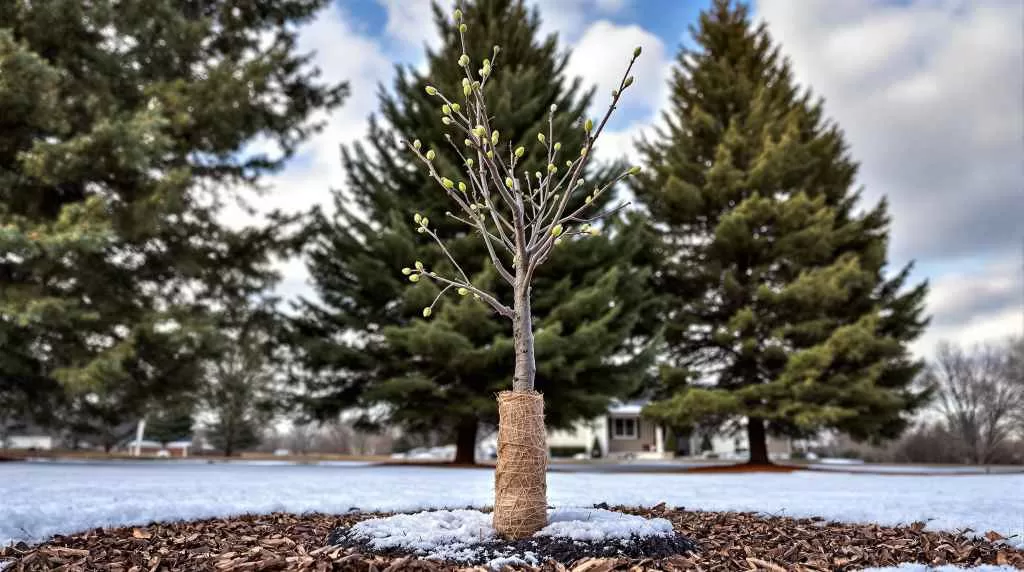
Caring for Trees During Castle Pines Winters
Trees are one of your landscape’s most valuable assets—and winter in Castle Pines can be tough on them. Proper late fall care helps prevent limb breakage, dehydration, and root stress, especially for younger or newly planted trees.
When and How to Prune in Late Fall
Late fall pruning helps shape trees and remove any dead or weak limbs before snow and ice add weight. Focus on thinning out dense areas to improve airflow and reduce the risk of storm damage, but avoid aggressive cuts that stimulate new growth this late in the season.
Protecting Young or Vulnerable Trees
Young trees are especially vulnerable to frost cracks and sunscald. Wrap their trunks with tree wrap from the base to the lowest branches, and apply a wide mulch ring around the root zone to help maintain consistent soil temperatures and moisture levels.
Snow Load and Wind Protection
Heavy snow and gusty winds are common in Castle Pines, so it’s smart to gently tie up flexible branches on shrubs or multi-stemmed trees. Use soft twine or plant ties to prevent branches from snapping under weight or swaying too far in strong windstorms.
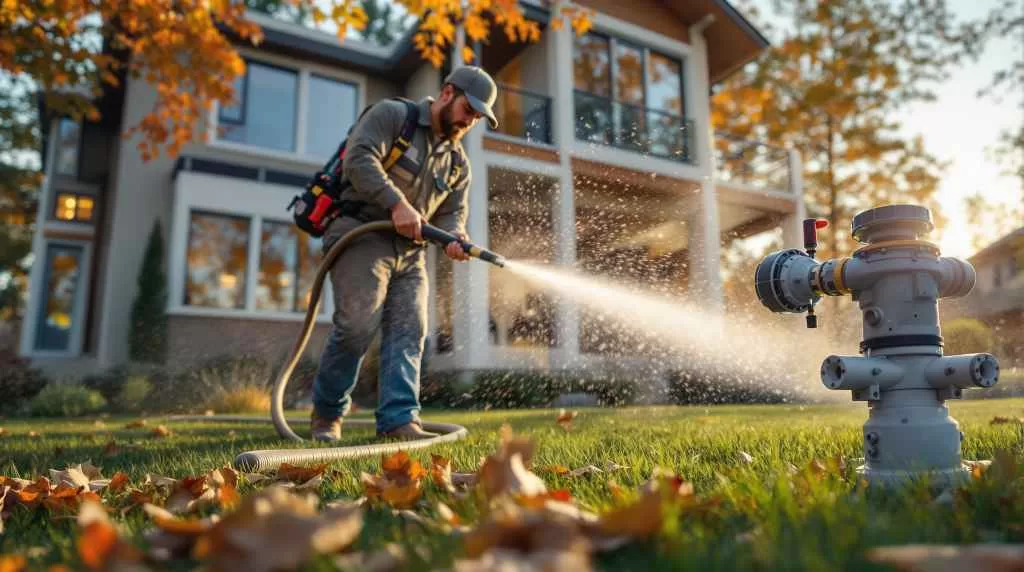
Preparing Irrigation and Drainage Systems
Winterizing your irrigation system is one of the most critical steps in protecting your landscape investment. In Castle Pines, where early freezes and ground shifts are common, overlooking this task can lead to cracked lines, backflow issues, and costly spring repairs.
Draining and Blowing Out Irrigation Lines
Before the first hard freeze, it’s essential to completely drain and blow out your irrigation system using compressed air. This clears residual water from pipes, valves, and sprinkler heads—preventing them from freezing and bursting underground during winter.
Shutting Down Backflow Preventers
Backflow devices are particularly vulnerable in Colorado’s climate. Be sure to shut off the water supply, open the drain valves, and cover the unit with insulated material or a backflow cover to keep it safe from freezing temperatures.
Managing Drainage to Prevent Ice Buildup
Proper drainage ensures snowmelt doesn’t collect and refreeze around your foundation, walkways, or lawn. Check that all downspouts, drains, and swales are clear of debris and properly sloped, so water flows away from your home and doesn’t create hazardous ice patches.
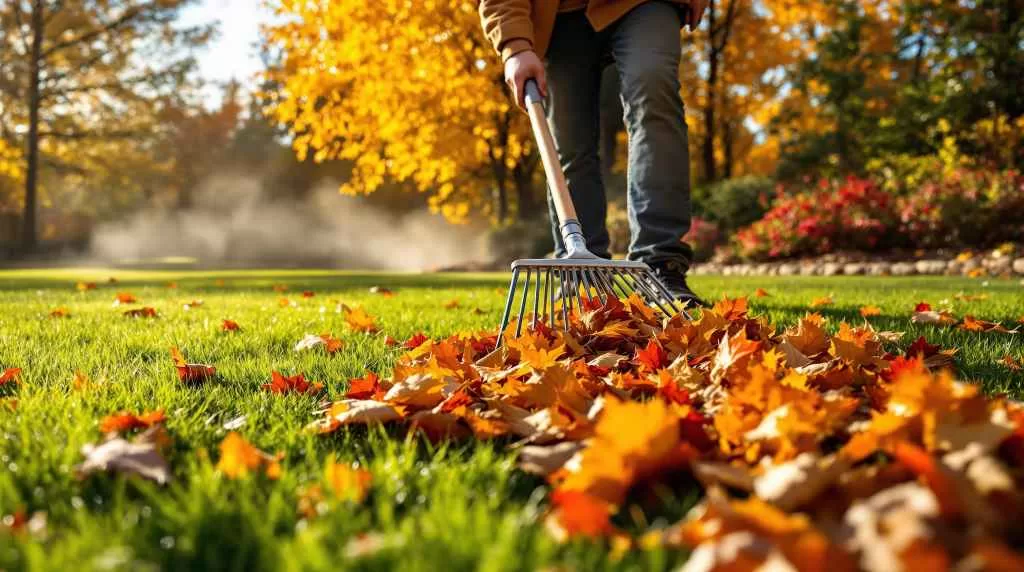
Late Fall Clean-Up for a Healthy Spring Start
A thorough late fall clean-up sets the stage for a smoother transition into spring and minimizes winter-related damage. It’s one of the most overlooked steps in Castle Pines home exterior transformations, but it plays a crucial role in plant health, pest prevention, and soil conditioning.
Removing Fallen Leaves and Debris
Leaves left on the lawn can trap moisture, leading to fungal diseases and snow mold once snow accumulates. Rake and remove debris from turf areas, garden beds, and hardscapes to keep air circulating and prevent rot.
Cleaning Up Vegetable and Flower Beds
Once annuals have died off, pull them from the ground and clear out any decaying plant matter to reduce pest habitats and soil-borne disease. Cutting back spent plants also makes room for early-season bulbs and perennials to emerge in spring.
Composting and Recycling Green Waste
Don’t let yard waste go to waste—composting leaves, clippings, and trimmed branches turns them into nutrient-rich material for future planting. For anything you don’t compost, Castle Pines typically offers municipal green waste collection options in late fall.
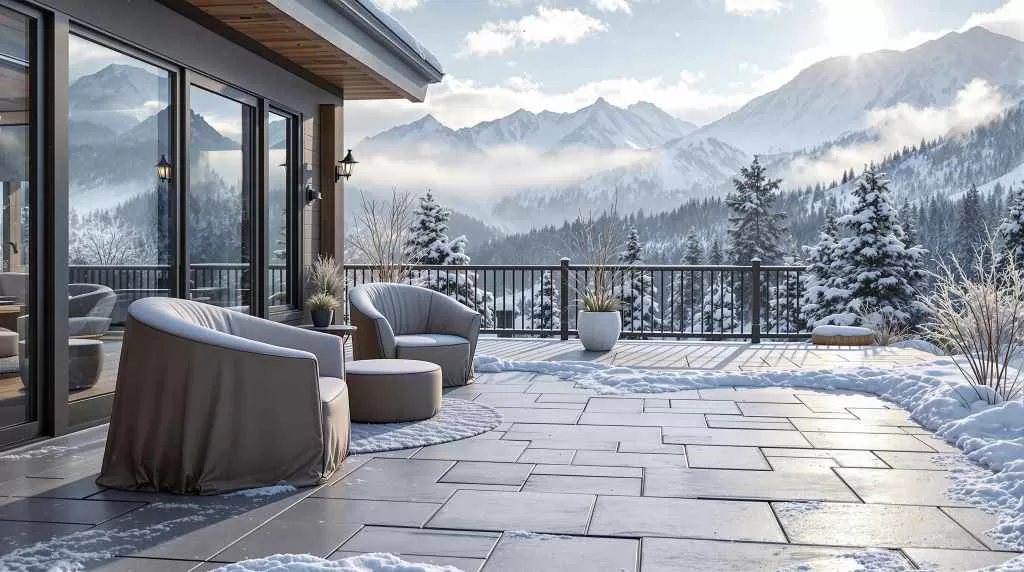
Hardscape and Deck Winterization Tips
Late fall is the ideal time to prep patios, decks, and walkways for the challenges of winter. These surfaces often go unnoticed, but neglecting them can lead to cracking, shifting, and costly spring repairs. If you’re planning to transform your yard in Castle Pines, winterproofing your hardscapes is a smart first step. Transform your yard in Castle Pines by protecting the structures that hold it all together.
Sealing and Cleaning Pavers or Concrete
Before snow hits, clean your hardscape surfaces thoroughly to remove dirt, moss, and debris. Applying a penetrating sealant helps prevent moisture from seeping in and expanding during freeze-thaw cycles, which can lead to cracks and surface damage.
Protecting Wood Decks and Structures
Wood decks need protection from snow and ice that can cause warping or rot. A coat of water-repellent sealant adds a layer of defense, while tightening loose fasteners ensures structural integrity through winter storms and shifting temperatures.
Storing Outdoor Furniture and Equipment
Outdoor furniture, planters, and garden tools should be cleaned and stored in a dry space or covered securely. Stack cushions, cover grills, and store fragile décor items to keep them in great shape for spring, avoiding damage from moisture or high winds.
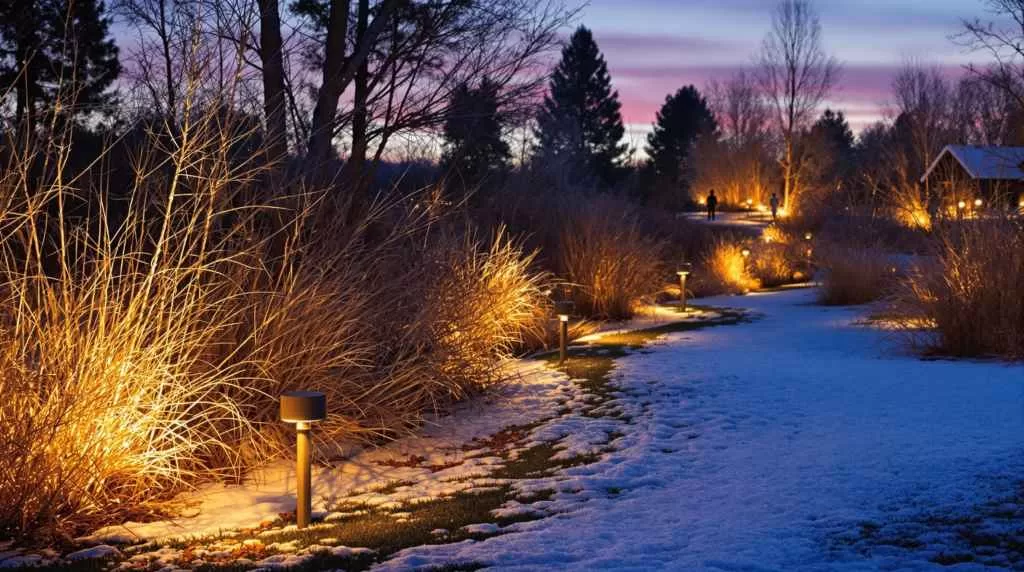
Landscape Lighting and Electrical Prep
As the days grow shorter, it’s important to winterize your outdoor lighting and electrical systems to avoid damage and ensure continued functionality. Prepping these elements not only protects your investment—it also helps maintain safety and curb appeal through the darkest months of the year.
Checking for Exposed Wires
Inspect all landscape lighting systems for damaged insulation or exposed wires, especially in high-traffic areas. Snow and ice can wear down weak spots, leading to shorts or potential hazards if not properly sealed before winter arrives.
Adjusting Timers for Seasonal Changes
With less daylight, you’ll want to reset your lighting timers to match new sunrise and sunset times. This ensures your walkways, entrances, and focal points remain lit when needed, helping both security and aesthetics during long winter evenings.
Cleaning and Protecting Light Fixtures
Before the first freeze, gently clean glass covers and lenses with a soft cloth and check for water-tight seals. For added protection, consider installing snow guards or shields around low-mounted fixtures that may get buried or blocked by snowbanks.
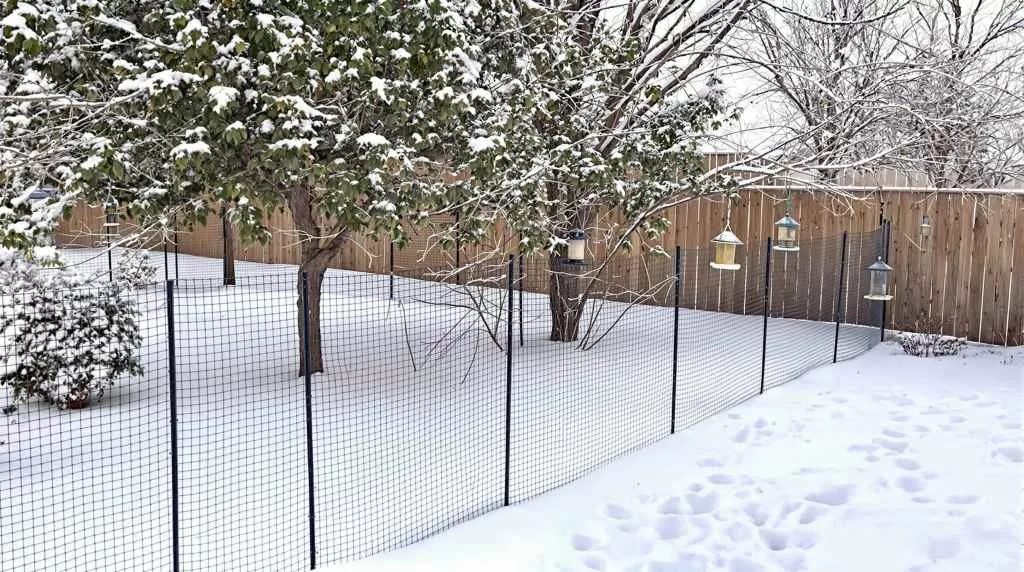
Wildlife and Pest Considerations in Winter
As natural food sources become scarce and shelter is limited, winter can draw both helpful and harmful wildlife into your yard. The goal is to deter destructive pests while still encouraging beneficial species like birds and pollinators.
Deterring Rodents and Burrowing Pests
Rodents often look for warm nesting spots under decks, mulch, or even inside irrigation boxes. Keep mulch layers shallow near your foundation, and seal gaps in outbuildings or retaining walls to prevent entry. Removing fall debris also reduces hiding spots.
Preventing Deer and Rabbit Damage
In Castle Pines, deer and rabbits commonly feed on bark, stems, and low-hanging branches during winter. Install temporary fencing or mesh wraps around vulnerable plants, and use scent-based repellents to discourage foraging.
Encouraging Helpful Wildlife
You can support birds and other non-destructive species by placing bird feeders and water sources in visible but protected areas. Choose native plants that hold onto seeds or berries in winter to provide natural food without attracting pests.
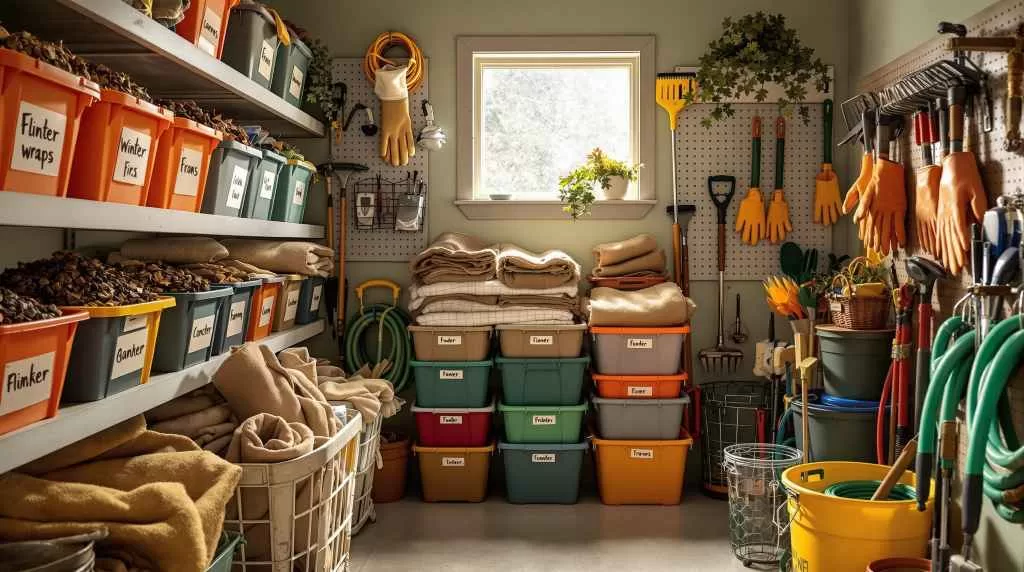
Tools, Supplies, and Timing: A Castle Pines Winter Prep Checklist
Staying organized with the right tools and timing can make winter prep much smoother. This section outlines the essential gear and ideal schedule for protecting your landscape before the deep freeze sets in.
Essential Tools for Late Fall Landscaping
Before starting, make sure you have the basics:
- Leaf rake and blower for debris removal
- Bypass pruners and loppers for trimming
- Mulch fork or wheelbarrow for spreading materials
- Air compressor or irrigation blowout tool for winterizing sprinkler systems
- Tree wrap, burlap, and plant ties for protecting trees and shrubs
What to Buy Before Winter Hits
Supplies tend to sell out fast once cold weather arrives. Stock up early on:
- High-quality mulch and compost
- Slow-release winter fertilizer
- Shrub wraps or frost blankets
- Plant-safe deicers for walkways
- Weatherproof lighting timers or covers
Best Timing for Each Task in Castle Pines
Due to Castle Pines’ elevation, most winter prep should wrap up by early to mid-November. Use this general timeline:
- October: Aerate, fertilize, trim trees, and plant bulbs
- Early November: Final mow, blow out sprinklers, mulch garden beds
- Mid-November: Wrap shrubs and trees, store furniture, and adjust timers
Preparing earlier ensures your landscape is protected before snow or a sudden freeze takes you by surprise.
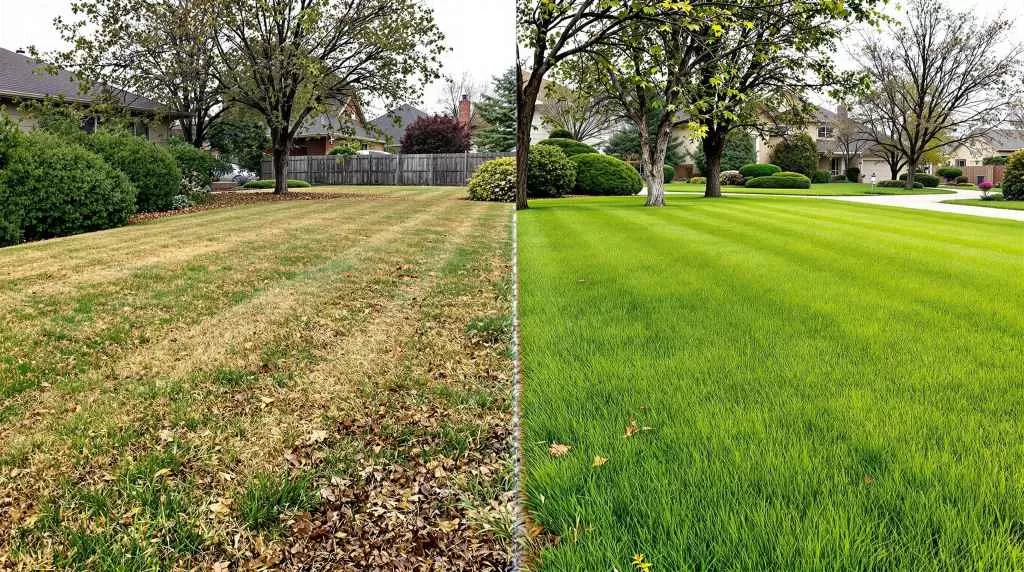
What to Avoid: Common Winter Landscaping Mistakes
Even well-meaning homeowners can unknowingly cause winter damage by skipping key steps or mistiming their efforts. Avoiding these common late fall missteps will help your Castle Pines landscape stay healthier and require fewer fixes in spring.
Skipping the Irrigation Blowout
Failing to blow out your irrigation system before the first hard freeze can lead to cracked pipes, broken valves, and costly repairs. Even if the system appears drained, residual water left inside can freeze, expand, and destroy underground components.
Over-Pruning or Late Fertilization
Pruning too aggressively in late fall can stimulate new, tender growth that won’t survive winter. Similarly, applying nitrogen-heavy fertilizer too late in the season encourages top growth instead of root development, weakening plants before dormancy.
Using the Wrong Mulch or Covering Plants Incorrectly
Not all mulch is created equal—cheap or poorly applied mulch can trap moisture against stems or provide a haven for rodents. Always keep mulch a few inches away from plant bases and use breathable materials like bark or shredded wood rather than plastic covers.

Preparing for Early Spring During the Off-Season
Winter is the perfect time to plan ahead. With the groundwork in place, your landscape will be positioned for a seamless, vibrant spring revival. Use the off-season to strategize improvements and get a jump on spring demand.
Planning Next Year’s Garden Layout
While your yard rests, spend time envisioning new planting beds, hardscapes, or irrigation upgrades. Sketch out garden zones, browse plant catalogs, and consider layout changes that will enhance beauty and function next year.
Ordering Plants and Supplies in Advance
Spring is peak season for landscape supply shortages, especially for popular trees and perennials. Pre-ordering bulbs, seeds, or specialty plants ensures you get what you want and avoids delays when planting season arrives.
Cleaning and Servicing Tools
Now’s the time to sharpen blades, clean out garden sheds, and oil moving parts on pruners, mowers, and blowers. Prepped tools make spring work easier—and you won’t be scrambling when the first warm days return.
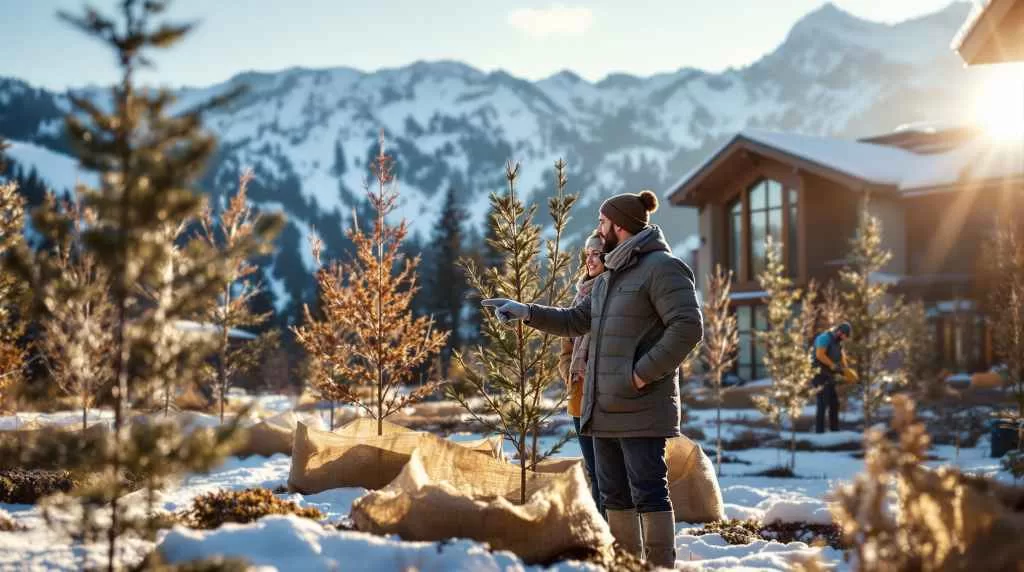
How Professional Help Can Simplify Winter Prep
Not every homeowner has the time or tools to prepare their yard for winter properly—and that’s where the pros come in. Hiring experts for seasonal prep can prevent long-term damage and even open the door to year-round backyard enjoyment. Many stunning backyard makeovers in Castle Pines begin with the right winter foundation.
Benefits of Working with Local Experts
Local landscaping professionals understand Castle Pines’ climate, soil, and elevation challenges better than anyone. Their knowledge of plant hardiness, drainage behavior, and timing ensures that your property gets the protection it truly needs.
Services That Can Be Outsourced
Tasks like irrigation blowouts, pruning large trees, shrub wrapping, and lighting adjustments are all better handled by trained crews with the right equipment. Professionals also have access to higher-grade materials that last longer through winter extremes.
Custom Landscaping for Long-Term Results
Investing in custom seasonal prep means you’re not just surviving the winter—you’re setting the stage for long-term beauty and function. A personalized approach ensures that your landscape evolves year after year, aligned with your vision and lifestyle.
Ready to Transform Your Outdoor Space?
Winter doesn’t have to be the end of your landscaping season—it can be the beginning of your best year yet. If you’re in Castle Pines, Castle Rock, Parker, or surrounding areas, our team is here to help you protect and prepare your landscape with expert precision. From winterizing irrigation systems to wrapping delicate shrubs, we handle every detail so your yard wakes up in spring ready to thrive. Let’s create a landscape you’re proud of all year long—starting now. Reach out today to schedule your personalized late fall consultation.

